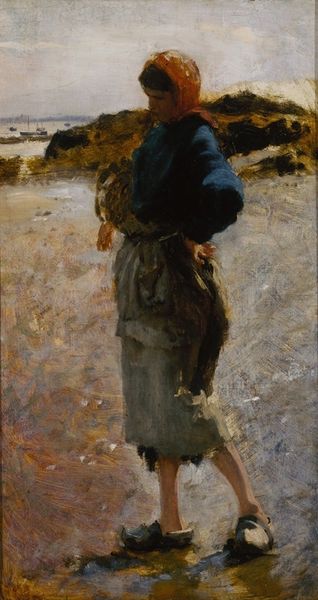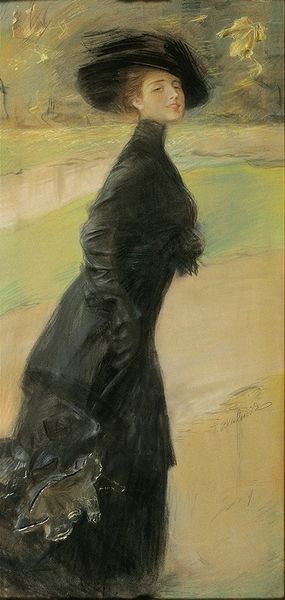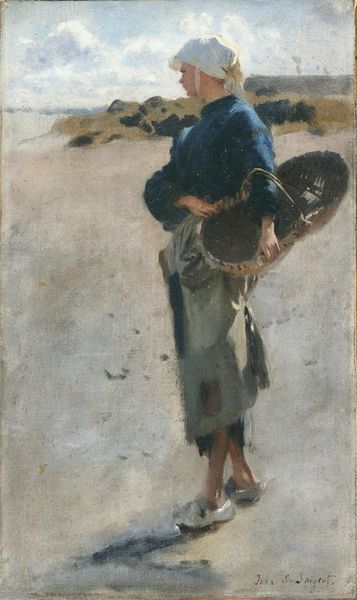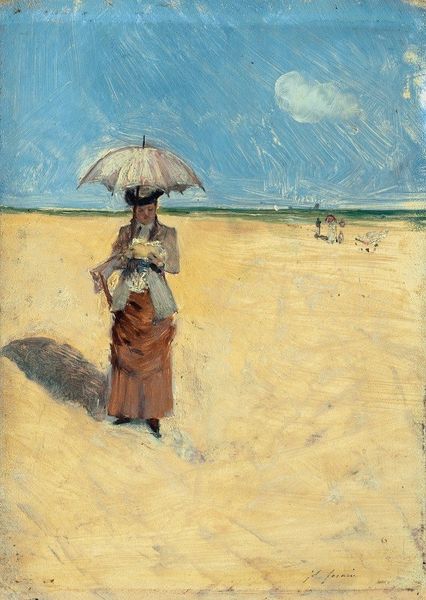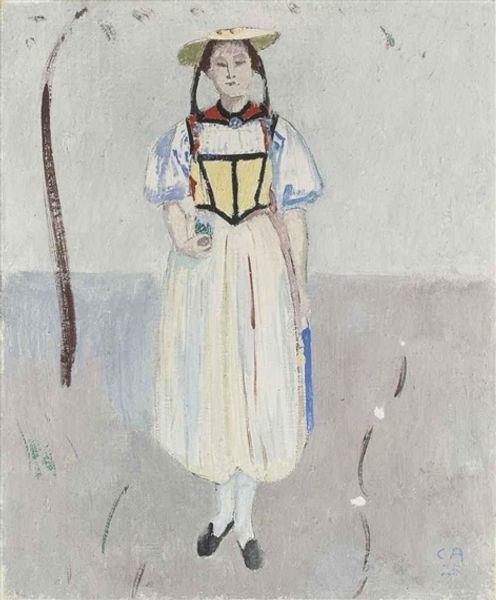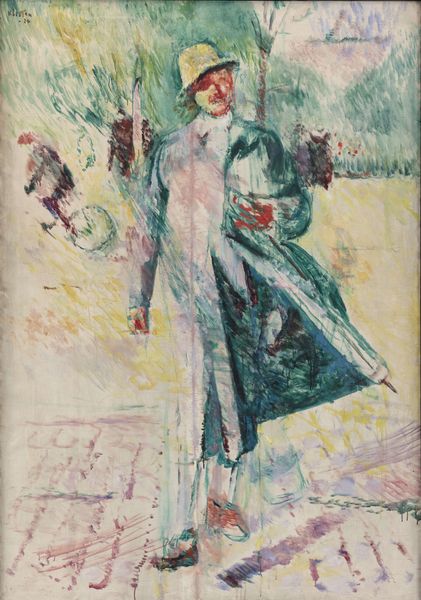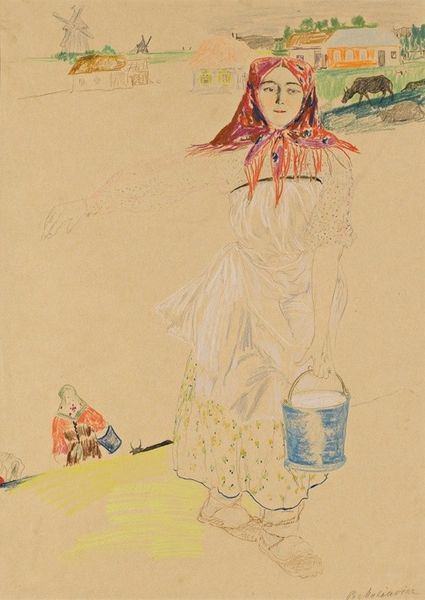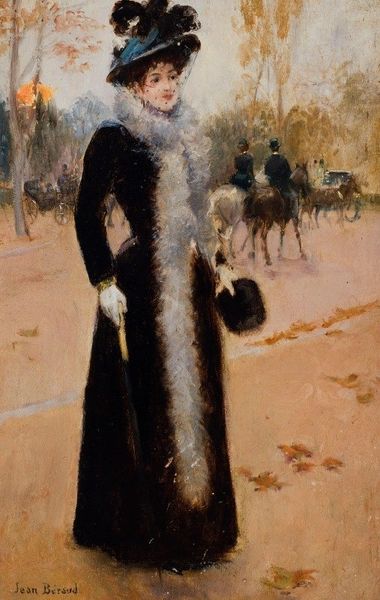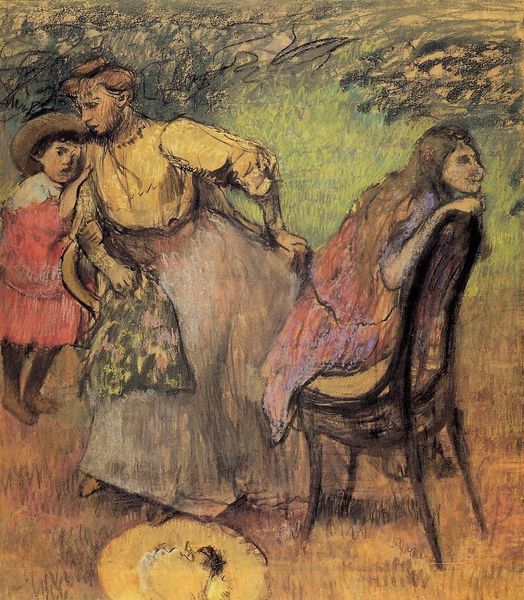
Copyright: Public Domain: Artvee
Curator: Stepping up to the canvas, we're about to consider Toulouse-Lautrec's "Émilie," thought to be painted in the late 1890s. Lautrec employs oil paint to bring to life a snapshot of Parisian life. What catches your eye right away? Editor: The immediate sense is of fleeting transience, almost as if this moment is dissolving before our eyes. There’s a starkness to the palette—muted greens, creams, and blues—which speaks to a deeper story, beyond just a stroll in the park. Curator: Indeed. Toulouse-Lautrec had a keen eye for social dynamics. It's intriguing how he captures a seemingly casual genre painting scene yet manages to infuse it with an element of psychological depth. This flâneur's existence. The main subject, Émilie, is presented with such incredible style and an almost ethereal look to her posture. I cannot help but consider that maybe she looks resigned. Editor: Precisely! Her turned back directs our gaze away from her face. Consider that her hat with dark plumage hints at societal roles and hidden aspects. Meanwhile, the figure on horseback fades, creating an intriguing tension between visibility and erasure. It begs us to ask what exactly is disappearing? Status? Tradition? Curator: He had that skill. Lautrec had the skill of hinting at volumes without the heavy weight of exposition. Also, I've read his relationship to Parisian society was sometimes a little waspish, right? Did he want to take down social elites? Maybe he knew her or knew about her life. The mind runs wild in this regard... Editor: Possibly, but his perspective can feel very generous towards the underdog, doesn't it? And this depiction may reflect not harsh judgement, but acceptance, reflecting on the transient and precarious beauty of modernity. Curator: Perhaps! Well, seeing this now... what remains is the strange haunting ambiguity he instilled in everyday scenes. A flâneur with questions more than answers. Editor: Yes, that’s the true iconographic punch isn’t it? This painting doesn’t simply depict a scene, it asks us to reflect on our own passing moments and fleeting impressions, and it begs us to consider what will remain of them, after us.
Comments
No comments
Be the first to comment and join the conversation on the ultimate creative platform.
